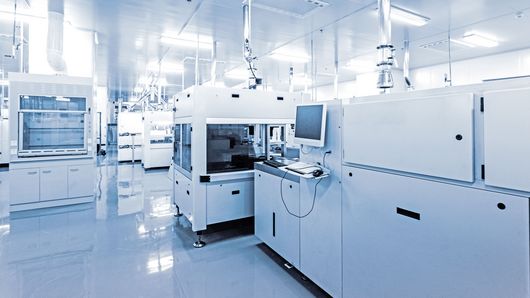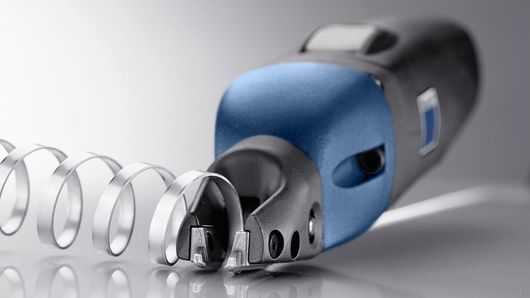The guide handle has proven to be particularly helpful in practice. This example has a very low position, just nine centimetres from the work surface. The guiding hand is therefore close to the machining surface, minimising the tilting moment and allowing you to optimally guide the machine. The handle shape, size and positioning are perfectly matched to each other and ensure safe and balanced machine guidance. One example of extra support is the insertion aid, mainly used for processing large and long sheet metals. This also substantially reduces effort while preventing kickbacks and ensuring safety.
For uncompromisingly good edges
Our deburrers are being used in industries such as steel and metal construction, tank and equipment engineering, vehicle construction, shipbuilding, railways/cableways and pipeline construction, with a diversity of end products being produced. These include sheet metal cladding and design elements (handrails, displays, etc.), for subsequent coating with powder and paint, as well as standard steel substructures with welded components.
How does milling work?
Deburrers use rotating milling heads to produce oxide-free chamfers. The machine does not require clamping into the workpiece, just guiding along the edges. An impeller guides the machine. The heat generated during milling is absorbed by chips. Surface structures then remain the same with no unevenness. Milling depth settings are fixed during a task and guarantee a dimensionally accurate and consistent chamfer length. Post-processing is unnecessary.
Advantages of milling
No kickbacks

Application examples
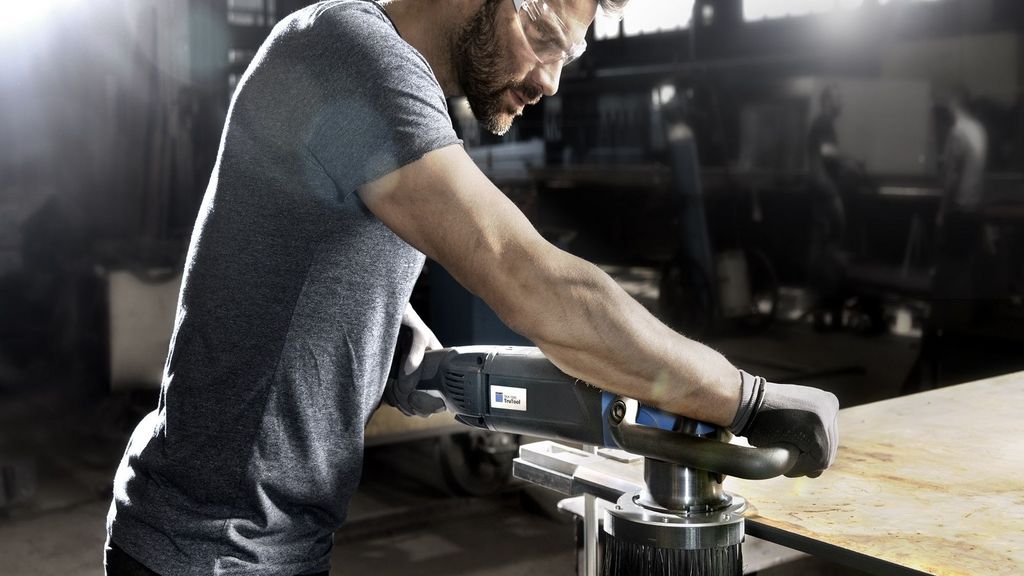
Working with chip protection: controlled chip fall
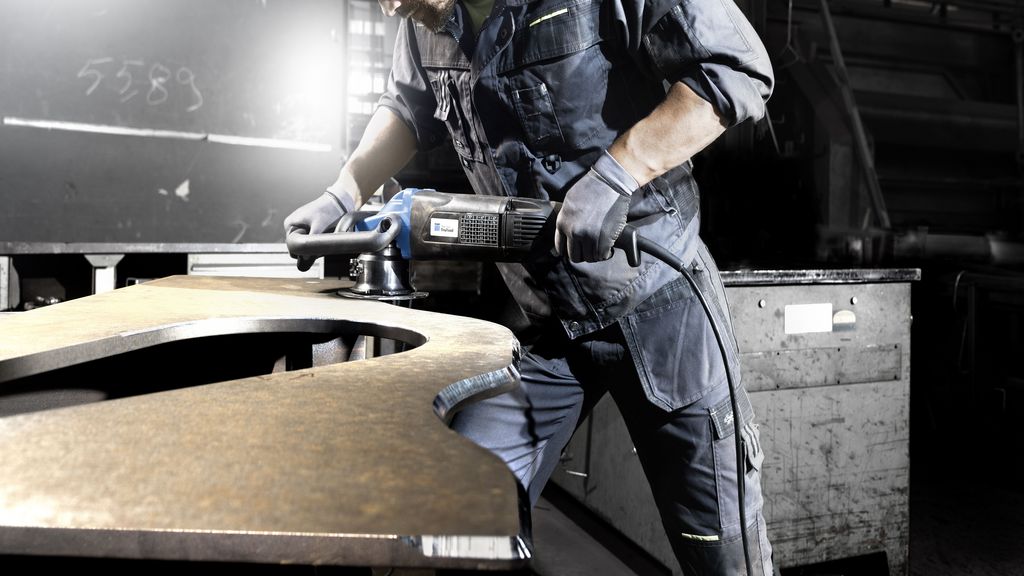
For the production of bare metal visible edges and radii
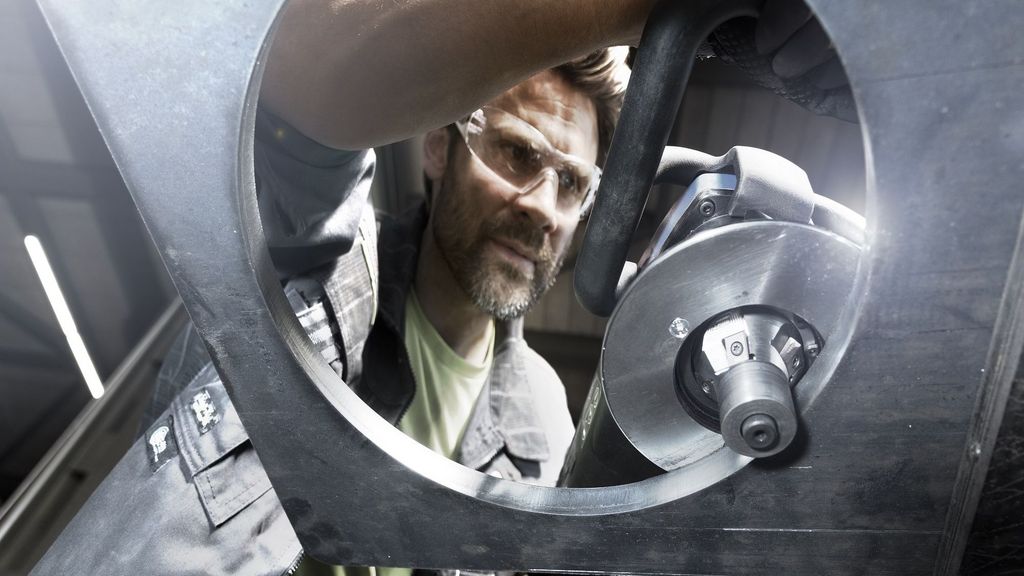
The machine is easy to guide

The chamfer length can be precisely set with a maximum 3/4 turn.
Deburrers in comparison
Advantages/Disadvantages
Advantages of deburrers over cutting wheels
- Unlimited sheet thickness
- Very good chamfer quality and uniform flange height in a single operation
- Flexible usage (mobile machine)
- Just a few simple machine settings
- Simple tool change
Disadvantages of deburrers over cutting wheels
- Chamfer lengths limited to 15 mm
- More vibrations, more noise
Advantages of deburrers over laser flame cutters
- Does not require an exhaust system
- Processing of interior cutouts and radii possible
- Easy handling, unrestricted mobility, low machine weight
- Oxide free: no post-processing necessary
- Very good chamfer quality and uniform flange height in a single operation
- Emission-free: no thermal effects, no dust, no sparks
Disadvantages of deburrers over laser flame cutters
- Chamfer lengths limited to 15 mm
- More vibrations
- Only one direction of processing
- Greater effort required
Advantages of deburrers over angle grinders
- High working speed: 5 - 10x faster, depending on the chamfer length
- Oxide free: no post-processing necessary
- Very good chamfer quality and uniform flange height in a single operation
- Emission-free: no thermal effects, no dust, no sparks
- Lower noise level
- Does not require an exhaust system No air pollution.
Disadvantages of deburrers over angle grinders
- Chamfer lengths limited to 15 mm
- Requires setting up
- Only one direction of processing
Advantages of deburrers over bevelers
- Wider range of applications
- Unlimited sheet thickness
- Processing of interior cutouts and radii possible
- Fewer vibrations
- Lower weight
Disadvantages of deburrers over bevelers
- More effort required when chamfering
- Reduced occupational safety in terms of machine handling and chips
- Only one direction of processing
- Chamfer lengths from 11 mm: slower working speed and 2 operations
Do you want to find out more?
Are you interested in our new machine? Do you have any questions or would you like to see the machine live in action? Get in touch with us!




